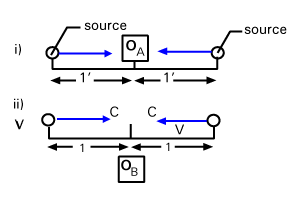Please wait while we process your payment
If you don't see it, please check your spam folder. Sometimes it can end up there.
If you don't see it, please check your spam folder. Sometimes it can end up there.
Please wait while we process your payment

By signing up you agree to our terms and privacy policy.
Don’t have an account? Subscribe now
Create Your Account
Sign up for your FREE 7-day trial
By signing up you agree to our terms and privacy policy.
Already have an account? Log in
Your Email
Choose Your Plan
Individual
Group Discount
Save over 50% with a SparkNotes PLUS Annual Plan!
 payment page
payment page
Purchasing SparkNotes PLUS for a group?
Get Annual Plans at a discount when you buy 2 or more!
Price
$24.99 $18.74 /subscription + tax
Subtotal $37.48 + tax
Save 25% on 2-49 accounts
Save 30% on 50-99 accounts
Want 100 or more? Contact us for a customized plan.
 payment page
payment page
Your Plan
Payment Details
Payment Summary
SparkNotes Plus
You'll be billed after your free trial ends.
7-Day Free Trial
Not Applicable
Renews July 16, 2025 July 9, 2025
Discounts (applied to next billing)
DUE NOW
US $0.00
SNPLUSROCKS20 | 20% Discount
This is not a valid promo code.
Discount Code (one code per order)
SparkNotes PLUS Annual Plan - Group Discount
Qty: 00
SparkNotes Plus subscription is $4.99/month or $24.99/year as selected above. The free trial period is the first 7 days of your subscription. TO CANCEL YOUR SUBSCRIPTION AND AVOID BEING CHARGED, YOU MUST CANCEL BEFORE THE END OF THE FREE TRIAL PERIOD. You may cancel your subscription on your Subscription and Billing page or contact Customer Support at custserv@bn.com. Your subscription will continue automatically once the free trial period is over. Free trial is available to new customers only.
Choose Your Plan
This site is protected by reCAPTCHA and the Google Privacy Policy and Terms of Service apply.
For the next 7 days, you'll have access to awesome PLUS stuff like AP English test prep, No Fear Shakespeare translations and audio, a note-taking tool, personalized dashboard, & much more!
You’ve successfully purchased a group discount. Your group members can use the joining link below to redeem their group membership. You'll also receive an email with the link.
Members will be prompted to log in or create an account to redeem their group membership.
Thanks for creating a SparkNotes account! Continue to start your free trial.
We're sorry, we could not create your account. SparkNotes PLUS is not available in your country. See what countries we’re in.
There was an error creating your account. Please check your payment details and try again.
Please wait while we process your payment

Your PLUS subscription has expired
Please wait while we process your payment
Please wait while we process your payment

Postulates and the Loss of Simultaneity
The most fundamental effect of the postulates of Special Relativity is to demonstrate that simultaneity (the notion of events occurring at the same time) is relative (dependent on frame of reference). This concept is best understood by way of example. Consider an observer OA standing equidistant between two light sources. OA has measured the distance to each source and found it to be lA. The sources each emit an instantaneous flash; the flashes reach OA at the same time, so he concludes that the flashes were emitted at the same time.
Now consider observer OB, moving past the sources and OA at speed v from the right (see
). In OB's rest frame (that is the reference frame in which OB is at
rest) they see the sources whizzing past to the left at speed v. OB has measured the distance between
the sources and found it to be 2lB, and also that OA is standing exactly half way between the sources
(a distance lB from each). From OB's point of view, the light from the right source travels at a speed
c (from our second postulate) with respect to OB, but with speed c + v with respect to the source.
Similarly the light from the left source travels at a speed c - v with respect to its source. Thus the time the
light takes to reach OA from the right source is tr =  and from the left source it is tl =
and from the left source it is tl =  . If v
. If v 0, then these times are different, and OB concludes that the light emitted by
the sources reached OA at different times and so the flashes could not possibly have been simultaneous.
0, then these times are different, and OB concludes that the light emitted by
the sources reached OA at different times and so the flashes could not possibly have been simultaneous.

Thus the whole concept of 'things happening at the same time' is relative. One must specify a reference frame to say that events are simultaneous. This will have especially important consequences for the measurement of length. Different symbols are used for the distance measured by each observer between the sources because the distances are indeed different, as we will see in Section 3, but this is not important in the example above. Finally, it is important to point out that the different times taken for the light to reach OA in OB's frame has nothing to do with the time taken for light to reach an observers eye; rather the sources really emit their flashes at different time in OB's frame (his frame is just as good as OA's according to our first postulate). The time taken for light to reach an observer's eye will never be taken into consideration in this topic (it would be trivial to calculate them: simply add on an amount of time distance/c, but this just complicates things unnecessarily).
Please wait while we process your payment

